 Written by Hulet Smith, OT
Written by Hulet Smith, OT
In order to reach their full potential in school, children with special needs need special desks to meet those needs. Research shows comfort has a significant impact on a child’s ability to learn, and adaptive classroom spaces that accommodate students’ individual needs improve educational outcomes. Whether it’s physical support, correct sizing, creating a personal mini-environment, or allowing for peer engagement, an adapted desk for special needs can set a child up for maximum comfort and success in school. We’ve researched the best school desks for children with disabilities based on comfort, functionality, and performance to help you make the best choice for your student.
An adaptive desk can accommodate a variety of students with different needs, whether they use a classroom chair, an alternative seating system, or a wheelchair. They are built to ergonomically support a child’s physical and developmental needs, adjustable to ensure a good fit, and promote inclusion and peer connections in the classroom.
The term “Special Needs” applies to four areas:
Including Down syndrome, autism, dyslexia, dyscalculia, dysgraphia, dyspraxia, aphasia or dysphasia, auditory processing disorder, visual processing disorder
Including multiple sclerosis, allergies and asthma, juvenile arthritis, leukemia, muscular dystrophy, epilepsy.muscular dystrophy, multiple sclerosis, chronic asthma, epilepsy, etc.
Including obsessive-compulsive disorder, dissociation, post-traumatic stress disorder, anxiety, depression, attention deficit (hyperactivity) disorder, bipolar
Including blindness, visually impaired, deaf, or with limited hearing
Developmental delays can affect a student’s physical, cognitive, communication, social, emotional, or behavioral skills. Early intervention plays a role in addressing developmental delays. Designing a learning experience tailored to support unique development needs early in a child’s education plays a key role in managing development special needs.
The considerations for kids with Down syndrome include desk height because they have low muscle tone and proper support will help fend off fatigue, foot support as proper foot stability lessens fatigue and supports the trunk, and back support since low muscle tone could make it difficult to sit for an extended time without something to lean against. Since about half of kids with Down syndrome experience sensory processing challenges, decreasing visual input and minimizing visual clutter by using a desk with a privacy screen can help a student concentrate.
ASD affects a child’s nervous system and growth and development. Kids with ASD generally find social interactions potentially overwhelming, inducing stress and anxiety. Students with autism can also be distracted by overwhelming sensory input such as sights, smells, and sounds. When students with autism are presented with too many stimuli, processing can be hampered or can completely shut down. Active seating where kids can freely rock or fidget can help them calm their nervous systems, sit-to-stand desks can also help them expend excess physical energy, and desks designed with privacy screens to limit distractions are all tools that help kids with ASD concentrate in the classroom.
Since students with sensory processing issues have trouble handling sensory input, the sounds, smells, textures, and other stimuli can distract them from learning. Alternative seating options, like a stand-up desk, or being able to use an exercise ball for a chair, can help a child manage their unique sensory input and sensory seeking needs along with classroom expectations.
Kids with physical disabilities may have challenges related to movement, posture, standing, sitting, grasping or manipulating objects, communication, eating, perception, reflex movements, and automatic and controlled muscle activities. If they rely on mobility aids to get around, they might even face challenges getting into a school building. It’s important to compensate for these challenges so barriers to education can be removed and kids with physical special needs can enjoy the full breadth of a quality educational experience.
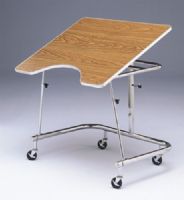 | Bailey Heavy Duty Mobile Adjustable Height Wheelchair Table View Product |
A wheelchair-accessible desk is height-adjustable to provide the necessary legroom to allow children in special mobility chairs to remain in their wheelchair while using the desk. A tilting tabletop feature is also useful to help the child maintain the best postural position if leaning over a flat desk is not comfortable or feasible. For tilting desktops, a lip on the edge will keep things from rolling off the desk when it’s in a tilted position.
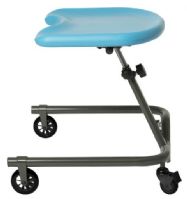 | Special Tomato Mobile Activity Tray View Product |
Gait trainers are used by children who are not able to consistently bear their full weight through their legs. Consistent usage is key to maximizing their benefits, which include supporting their physical development and allowing kids to be at eye-level with their peers and to more easily participate in classroom activities and social interactions. A height-adjustable mobile desk that is easy to move around the classroom and accommodates the space taken up by gait training equipment.
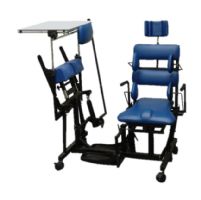 | Symmetry Solid Seat Stander and Positioning System View Product |
Children with cerebral palsy have difficulty performing activities that require the use of fundamental motor skills. Since pediatric standers serve students confined to wheelchairs or with compromised ambulation skills by enabling them to stand upright at various times during the day, a desk that can accommodate a pediatric standing frame while providing a student workspace has multiple advantages. It supports improved circulation, joint weight-bearing, and bone density while allowing the student to be comfortably and safely supported during classroom activities.
| Height Adjustable Tilt Desk for Kids View Product |
Muscular dystrophy progressively causes loss of muscle function and independence. Fatigue will often make staying alert and concentrating difficult for students with this condition. Energy conservation and work simplification can often provide ways to help offset fatigue and make school more productive and enjoyable. A desk that accommodates a child’s mobility equipment, and provides easy access to the workspace as well as any storage, will set the student up to have more energy to devote to learning and participating fully in the classroom experience.
Emotional and Behavioral Disorder is an umbrella term for several distinct diagnoses that can impact student performance, including attention deficit hyperactivity disorder, anxiety disorder, bipolar disorder, oppositional-defiant disorder, and more. Alternative seating, involving exchanging typical classroom seating for different seating options with various sizes, textures, and functions, can help students with behavioral and emotional special needs to stay on task and enjoy more academic success.
Children with ADHD can’t resist the urge to move. Rather than fight that irresistible urge, kinesthetic learning products are specially designed desks, chairs, stools, and other accessories that allow and encourage movement and activity while learning. The opportunity to use a desk where standing, spinning, walking, stepping, or pedaling are possible can meet the movement needs of kids with ADHD while allowing them to focus on their schoolwork.
Desks that are height adjustable to accommodate alternative seating address the movement issues often encountered by kids with behavioral or emotional special needs. Yoga balls, balance disks, soft seating, motion stools, stationary bikes or under-desk pedals, standing desks, bungee chairs, and beanbag chairs are alternatives to traditional desk seating that can support the needs of students dealing with Emotional and Behavioral Disorder.
Students with sensory impairments either have total or partial loss of vision, total or partial loss of hearing, or significant loss of both hearing and vision.
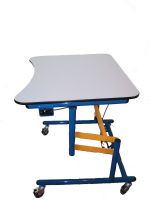 | Convert-Able Table with Interchangeable Tops View Product |
For visually impaired students, a bright-colored desk with the opportunity to light the workspace with a clamp-on lamp will help make the most of the vision the student has. A large workspace that will accommodate tactile models of graphic materials and organizational aids to conveniently hold school supplies.
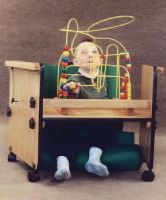 | Pediatric Adjustable School Floor Desk for Kids View Product |
Floor-time is an important part of the school day for young students. If maintaining a postural position is difficult for a special needs child, a floor desk helps a student be at eye level with peers during floor activities while maintaining a sitting position.
| TherAdapt Extended Easel for Kids View Product |
Standers used throughout the day support improved circulation, joint weight-bearing, and bone density for students who can’t stand upright on their own. A desk that can accommodate a stander and includes a tilt function for a vertical workspace allows a student in a stander to do deskwork.
| Dual Comfort Recess Table for Kids View Product |
Just as standard desks are often grouped together in a classroom, when there are two or more children who share the need to have a desk that can accommodate their wheelchairs, they can also be comfortably grouped around a shared workspace rather than being singled out off to the side of grouped students.
Because a student’s desk is where a majority of school work is done in a day, it’s important that the desk meets the student’s needs. For a student with special needs, finding a desk that accommodates those needs will have a bearing on the student’s ability to listen, focus, retain information, connect with peers, and learn.
If a desk is going to be used at home by one student, it doesn’t have to be as durable as a desk that could serve several students for several years in a school classroom. School desks are built to industrial standards and are often purchased in bulk. A more customized option can be chosen for single-student home use.
An appropriately sized desk creates a more comfortable learning environment. The workspace needs to be big enough to accommodate activities, and the seating needs to be sized to provide postural support and allow for a student’s feet to be flat on the ground so as not to contribute to fatigue.
A desk in a school classroom could get a lot of use from multiple users. Since not everyone’s size, shape, and needs will be the same, the desk should be adjustable so each student who uses it is comfortable and safe.
If a desk is going to be moved around, it should be lightweight and easy to transfer to a new location. If it is going to have to stand up to years of heavy use, it should be durable with features like heavy-duty construction and a powder-coated finish.
The size and type of chair that can be used with a desk should be considered, as non-traditional options might need more room to accommodate a wheelchair, pediatric stander, or a wobble stool.
A stationary desk remains at one level, and it is used by a student sitting in a chair. A standing desk allows for standing in front of the desk, and also allows for movement and weight shifting on the legs and feet; that doesn’t happen when seated in a desk chair.
When the body is stressed by being in an awkward posture or movement, distractions are increased while concentration, focus, and productivity are decreased. Proper body alignment leads to a comfortable position that allows students to concentrate on what is being taught.
A: Yes! The sensory feedback activated by standing helps kids process information, and helps them stay engaged in activities. This is especially true for children with learning differences like ADHD.
A: Seat the student away from doors, windows, or buzzing lights, adjust the desk and chair so the student’s feet are flat on the floor, attach a stretchy band to chair legs or the desk for students to bounce their feet, provide a weight lap pad, vest, or wiggle cushion, use earplugs or noise-canceling headphones, allow handheld fidget toys, and let the student move and change positions. Using a standing desk, an exercise ball for a seat, or privacy partitions on the desk can help.
A: A 504 plan is a blueprint for supporting a student with a disability, removing barriers at school that can impede learning, and giving equal access to an education.
A: The Individuals with Disabilities Education Act (IDEA) ensures that children with disabilities are entitled to free public education to meet their unique needs and prepare them for further education, employment, and independent living.
A: An IEP is a map that lays out the program of special education instruction, support, and services students need to make progress and find success in school.
A: Research shows that classroom accommodations often include how the room is arranged, individualized instruction and resources, accommodating student learning styles, recording directions, changing the length and difficulty level of assignments, and giving prompts for the special needs student. When testing the special needs student, they often increase the test time, shorten the test, or deliver the questions orally. To support peer interaction, teachers said they use peer tutoring, teaching specific social skills, creating social opportunities, using cooperative learning groups, and delivering special reinforcement to support learning for the special needs student.
A: It is important for schools to accommodate students with learning disabilities because without accommodation, students’ academic careers can be negatively impacted, they can develop mental and physical health problems, and they are not able to reach their full potential as members of society. Additionally, schools are legally required to accommodate students with learning disabilities, and must do so to comply with applicable laws put in place to protect and serve children.
To equip students with special needs to reach their highest academic potential, the classroom environment has to address their challenges and provide solutions so they can focus on school. To choose the best school desk for your child’s needs, do your research to find the perfect fit. Height adjustable desks deliver on flexibility, which is especially convenient if more than one child will be using a chair. Our Special Needs Store has a wide range of products designed to accommodate and enhance daily life with kids who have special needs.
The seating options a chair accommodates, what special needs it addresses, and its level of adjustability are all factors that will help you determine which school desk for children with disabilities will serve you best.
Thank you for reading about the best school desks for children with special needs. You are encouraged to visit Caregiver University to check out our vast library of information that will help you make the best purchasing decisions for adaptive equipment to benefit your special needs child.
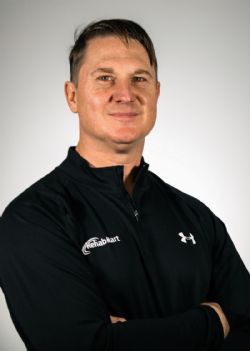
Co-founder/CEO of Rehabmart, Pediatric Occupational Therapist, husband, and father. Passionate about connecting special needs kids with superb nutrition, sensory integration, and complementary health strategies. Excited about Rehabmart's mission to become the premier online educational platform which empowers caregivers by spotlighting innovative devices and interventions to achieve optimal patient response and recovery.